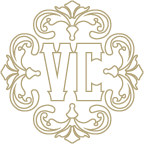What Lurks In The Shadows
Silhouettes have captured profile portraits of civilization for hundreds of years. Lauren Muney hand-cuts silhouettes with scissors in the traditional portrait style, which was especially popular between the 1760s and 1860s.
This historical portraiture method was very popular before photography was commonplace, and for many, a silhouette was the only visual record of family members. Muney will be a guest of the 2022 Victorian Chautauqua, and she will be taking commissions and demonstrating her extraordinary talents throughout the weekend of July 9th and 10th.
Muney's only tools are special paper and delicate scissors. She carefully examines her sitters and then fluidly cuts the profile out of that paper. She has perfected her art form and requires no drawing before the cutting begins. Her scissors coax out the likeness of her subjects, progressing carefully without any opportunity for erasure – “freehand,” if you will. People who witness Muney at work often remark how delightful it is to watch. In many ways, it is as much a performance for everyone, excluding her subject, who is under her careful scrutiny.
Lauren Muney Can Cut It
"Silhouettes are capturing a moment," Muney describes of her artistry. "As every person is three-dimensional, so silhouettes cannot ever capture the wholeness of a human. Silhouette portraits are simply a connection of us to our past. We create a likeness since we cannot fully capture our complex beauties and selves."
Once complete, the miniature black shape encased by its own perimeter is like a window into the person it represents. The mind fills the empty shadow with what we imagine was the subject’s flesh, blood, and soul. Each head and shoulder is a timeless tribute to humanity with small details that depict a certain age and resemblance.
Through the centuries, professional and amateur artists were called upon to create profiles using either paint or scissors. Silhouette profile portraiture was a popular way to capture an image of a loved one before the invention of photography in the mid-1800s.
Although this technique’s common names are profile, shade, shadow portrait, or likeness, the familiar word silhouette is named after Etienne de Silhouette, who served as the French finance minister and economist in the mid-1700s. He was known to spend his spare time cutting profiles. He was disliked for introducing wealth and luxury taxes for the privileged and reducing expenditures within the French government. His tactics to curb France's spiraling deficit earned him much criticism and a miserly reputation.
What became a derogatory term “à la silhouette” (in the manner of Silhouette) referred to being cheap or frugal, including cheaply-made portraits that cost far less than extravagantly commissioned paintings and sculptures. Rightly named, anything “à la silhouette” was a reduction to its simplest form.
Profiles have a long, romantic, and storied history dating back to the 1500s. Supposedly, Catherine de Medici took it up as a hobby. They were often created as love tokens of soldiers in wartime and displayed in homes to remember family members for hundreds of years. Profile portraits were a suitable alternative when painted portraits were beyond the financial means of a modest household.
Whether painted on glass, plaster, or cut from paper or cloth, profile portraits became important to the people they symbolize. They are surviving icons of a true society’s views on social status, commerce, travel habits, family values, inheritance, and fashion. All those aspects weave together the fabric of everyday life at the time they were commissioned. Silhouettes were not reserved for nobles and the affluent, so they represented a plethora of people from all walks of life.
Jane Wasn’t Plain
One of the most iconic silhouette images is the portrait believed to be that of English novelist, Jane Austen. Her writing of six major novels earned her great acclaim in the late 18th and early 19th centuries. This delicate rendition allows one to connect to the woman behind the words.
You can learn more about Lauren Muney by following her on Instagram and Facebook. She regularly appears throughout the region to share her work and accept commissions. Her favorite events are at museums where she can talk about the evolution of her chosen art form with her subjects and those looking on. You can watch her work in the video below.





